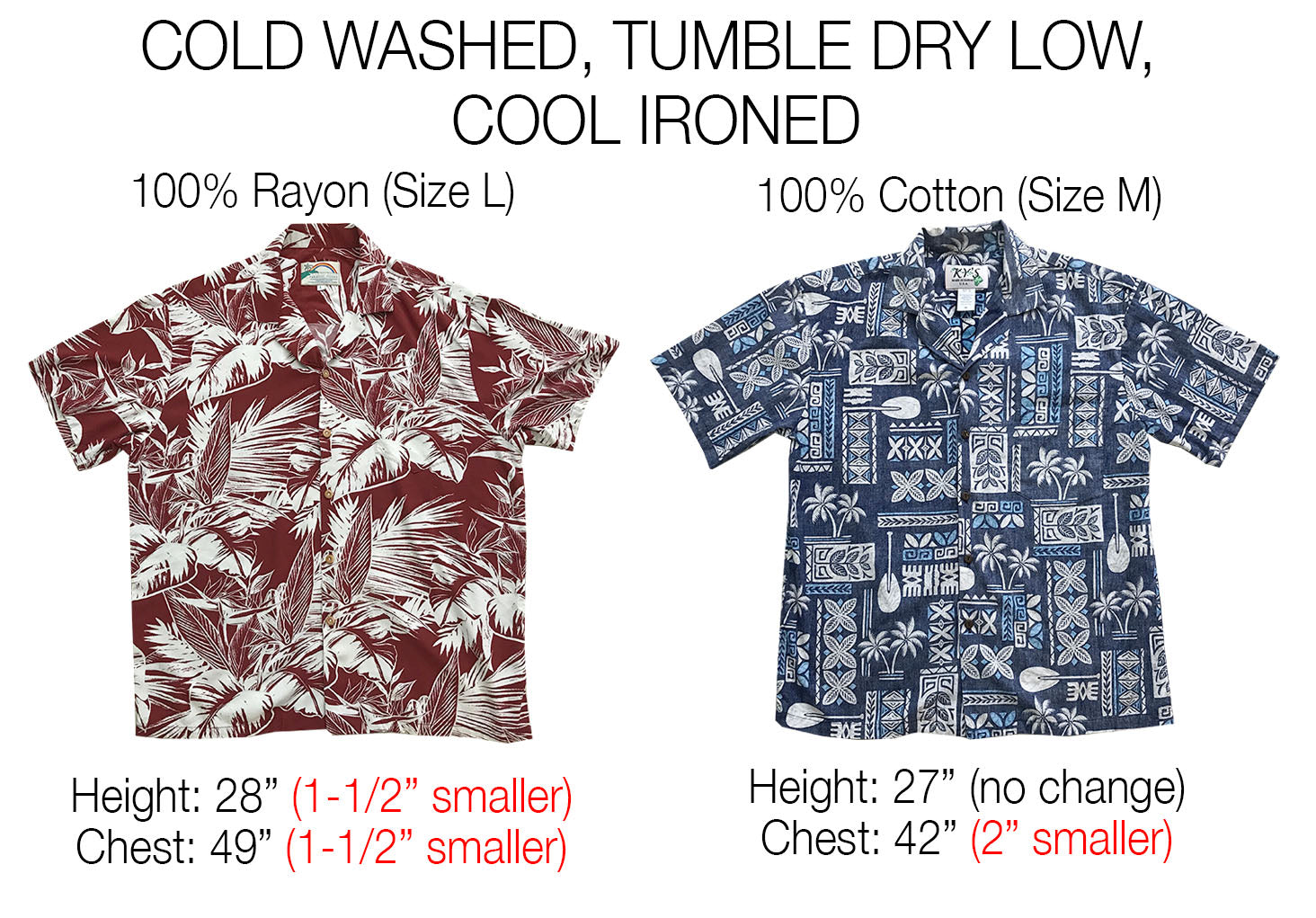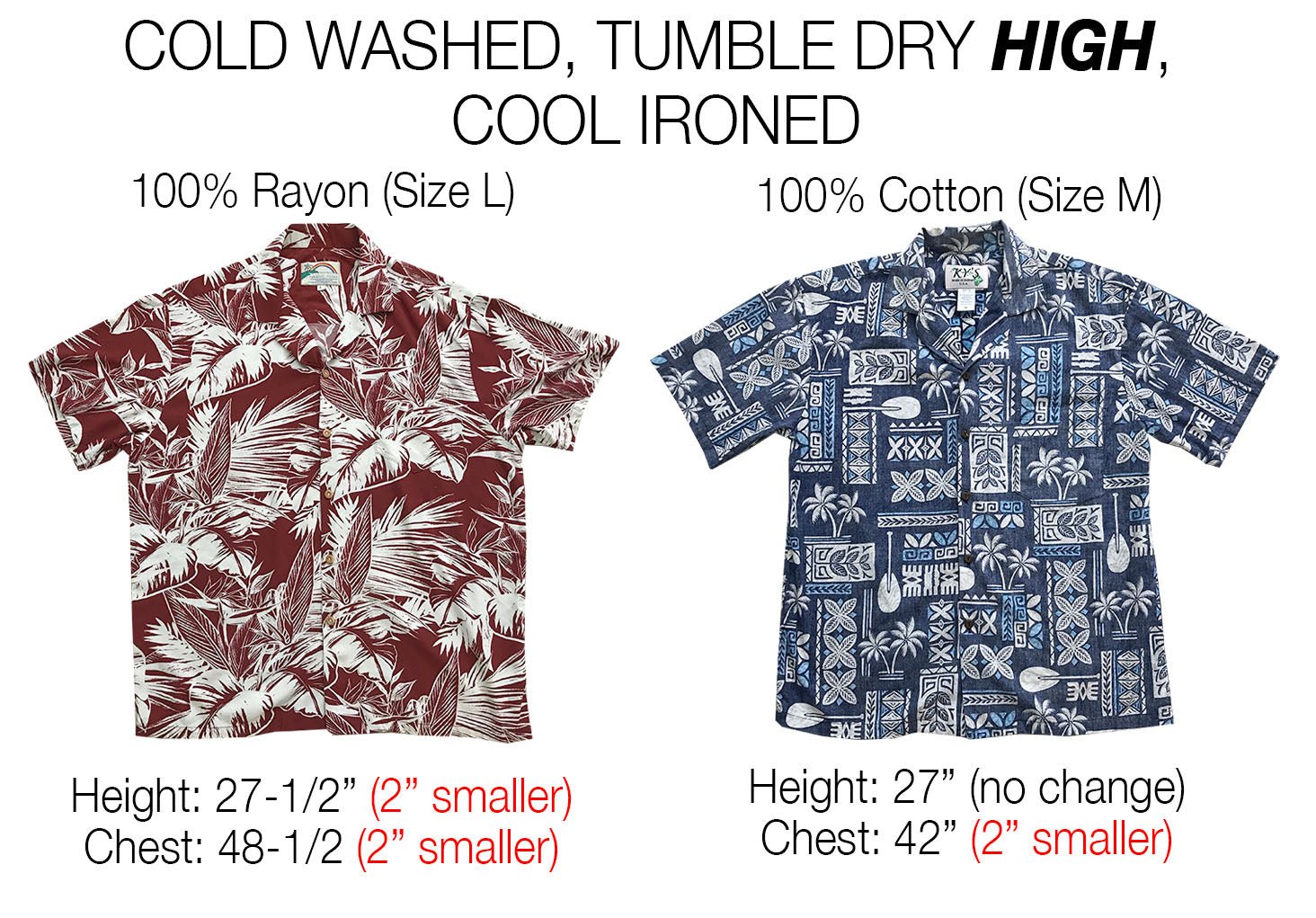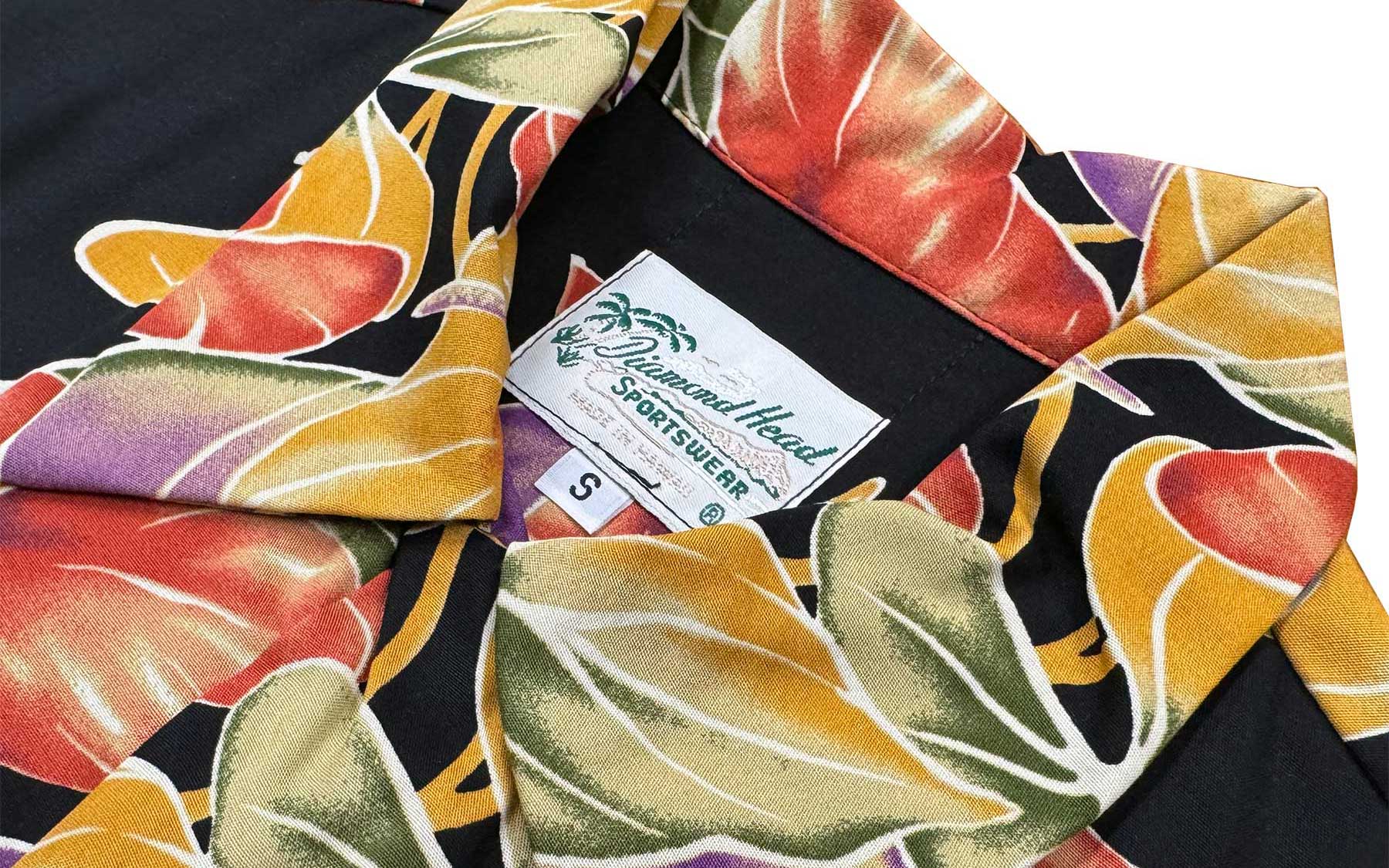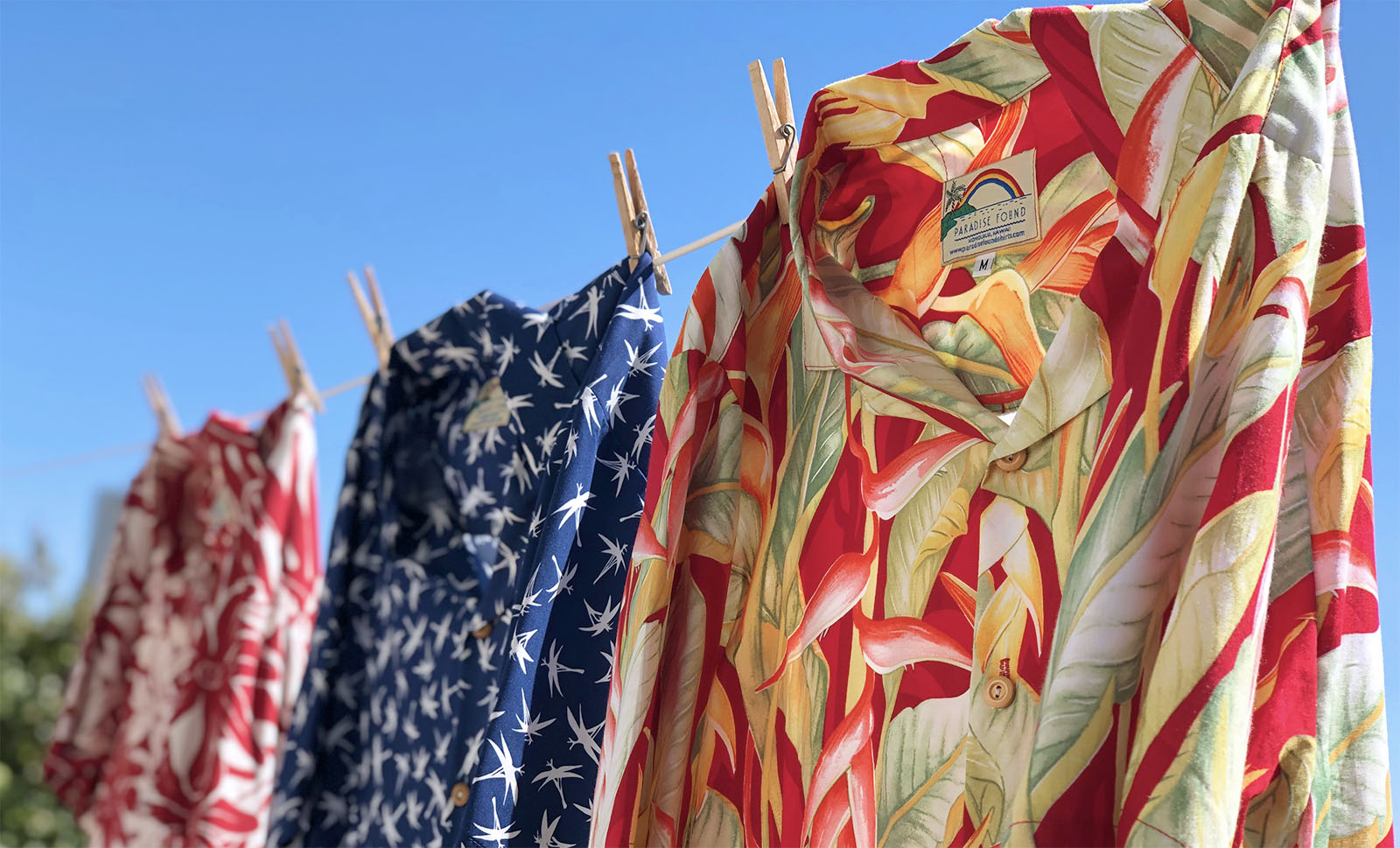One of the things you’re probably concerned about when caring for your new Hawaiian shirt is how much it will shrink after it goes through the washer and dryer. As you already know, different garments have different care instructions and those instructions can usually be found on a label sewn into the clothing. In general, cotton garments should be cold washed and either line dried or tumble dried on low. For wrinkles, a cool iron can be used if necessary. Similarly, rayon garments should be cold washed and hang dried with cool ironing as well if necessary. Often times the care instructions called for gentle hand washing rather than machine washing. Silk garments are the most delicate and should be cold washed and hang dried without twisting out the water as the twisting motion can stretch the material. If ironing is needed on a silk garment, only the lowest heat setting should be used.
Having said all that, we know it’s hard to resist the convenience of using a dryer and not everyone has space to hang clothing to dry. So, what happens if you dry your new Hawaiian shirt in the dryer? We decided to find out by putting a 100 percent cotton and a 100 percent rayon Aloha shirt to the test.Please note that we did not do this test on silk, so if you have a silk Hawaiian shirt, you’ll have to trust the care instructions on the label for now. Maybe we’ll sacrifice a silk shirt for a future article, but for now, let’s just see what happens to the cotton and rayon shirts.

The first thing we did was take some simple measurements of each shirt to know what we were starting with. We measured the length of the shirt from the top shoulder seam right at the collar down to the bottom of the shirt. Then we measured the length between the arm pits to determine the starting width. Once we recorded those numbers, we put the shirts in the washing machine and washed with cold water, air dried, then cool ironed them. Here are the measurements after air drying and cool ironing both shirts. As you can see, the rayon shirt lost about 1/2 an inch in each direction while the cotton shirt came out the same size as it started.
Next, we washed both shirts in cold water again. However, this time instead of letting the shirts line dry, we put them in the dryer on low heat, making sure we left them in long enough to dry completely. Then we cool ironed the shirts. Here are the measurements after that step. As you can see, the rayon shirt experienced significant shrinkage, using about 1-1/2 inches in each direction. If you're trying to find out how to shrink rayon, the answer seems to be to put it in the dryer. The cotton shirt also shrunk about two inches in width butdidn’t appear to lose any length.
Finally, we washed the shirts again.This time, we put them in the dryer again, but we dried them on high heat instead of low. We left them in the dryer until they were completely dry and then we cool ironed them to remove any wrinkles. Here are the measurements after that process. As you can see, the rayon shirt shrunk a little more after this step, losing another 1/2-inch in each direction. The cotton shirt did not shrink any farther.

One thing that surprised us in this experiment was that the shirts suffered their biggest shrinkage after the first dryer test, which was set to tumble dry low temperature. While the rayon shirts shrink a little more during its trip through the high temperature dryer, the shrinkage wasn’t as significant as the first dryer test. This surprised us, so we decided to dig a little deeper. Upon further inspection, we found that the dryer we used actually gets pretty hot even on the lowest temperature setting. So,we probably shrank our shirts more than they would shrink in a better dryer with a cooler tumble low setting. And after the first dryer test, most of the shrinkage had already taken place, perhaps due to the higher than expected heat.
Another factor that comes into play is the length of time that shirts are in the dryer at any given temperature setting. It’s very possible that the shirts will suffer more shrinkage from a long dry time at a lower temperature setting than a short dry time at a high heat setting. If you’re drying a large load of laundry, it takes longer for the clothes to dry, which would theoretically subject the shirt to prolonged exposure to dryer heat. It’s quite possible that the duration of the heat exposure can have as significant an impact on shrinkage as the temperature setting, though our test didn't look at that factor specifically.
Anyway, after all of our analysis, we have come to a few simple conclusions that can help you care for your Hawaiian shirt:
- Rayon shirts are more susceptible to shrinkage than cotton shirts.
- Rayon shirts even shrank slightly when hang dried.
- If you hang dry your shirts (cotton or rayon), you probably won’t experience significant shrinkage, though you should expect a rayon shirt to still shrink a minimal amount. Any shrinkage may not even be noticeable.
- If you put a rayon shirt in the dryer with medium or high heat, it will likely shrink about half a size. (If you blast it for an hour, it will likely shrink by more.)
- As a rule of thumb, hang dry your Hawaiian shirts and dresses. Why take a chance on shrinking it? And if you must use a dryer, be sure your dryer is not like ours and gets hot even on the low setting. Use the coolest setting you can and don’t leave it in too long.
- If it were up to us, we would always hand wash a rayon shirt as delicately has possible without leaving it in the water too long. Then we'd hang dry the shirt and cool iron if necessary.
So that’s it. Hang dry your shirts or dresses and only use a dryer as a last resort. If you absolutely need to put your Hawaiian clothing through the dryer, never use high heat. If you follow those steps, your new Hawaiian shirt or dress will bring you years of enjoyment.




